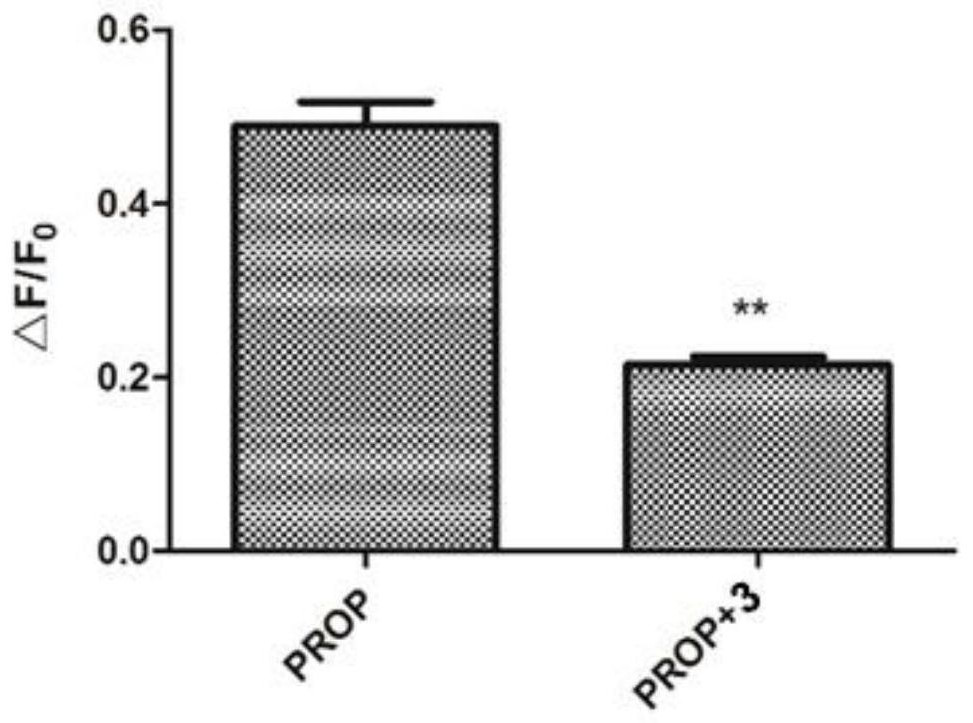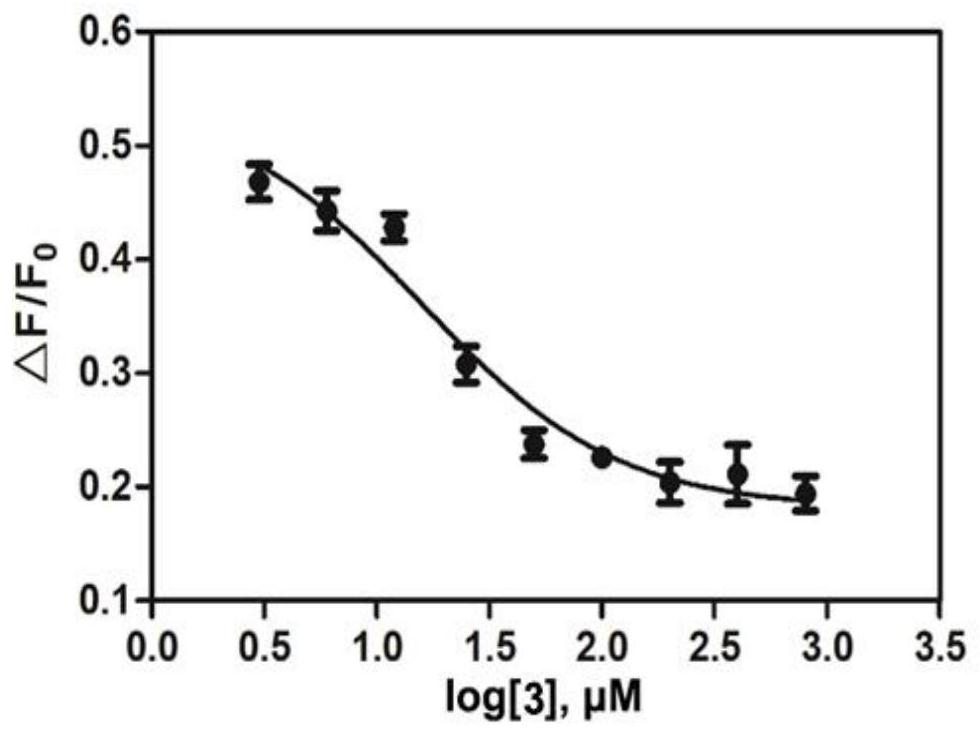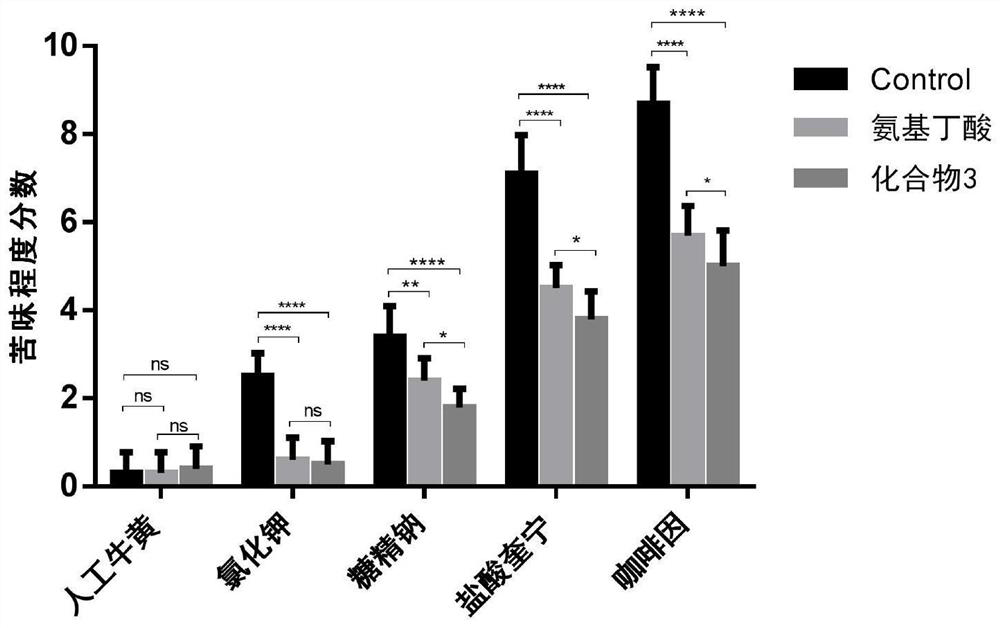A new application of 2,6-disubstituted pyridine-4-thiocarboxamide
A technology of dithiocarboxamide and thiocarboxamide, applied in the field of medicine, can solve the problems such as the inhibitory effect that has not yet been reported
- Summary
- Abstract
- Description
- Claims
- Application Information
AI Technical Summary
Problems solved by technology
Method used
Image
Examples
Embodiment 1
[0024] Example 1, Inhibition of the Function of Bitter Taste Receptor hTAS2R38 by 2-Propylpyridine-4-thiocarboxamide
[0025] PROP is an agonist of bitter taste receptor hTAS2R38, which can stimulate and activate bitter taste receptors, resulting in changes in calcium ion concentration in cells. Fluo4-AM is an acetyl methyl ester derivative of Fluo4, which can easily enter cells through culture. After AM enters the cell, it will be hydrolyzed by intracellular esterase, and the resulting Fluo4 will then react with calcium ions (Ca 2+ ) bind and fluoresce. In this study, HEK293T cells transfected and expressing bitter taste receptors were stimulated with PROP alone or PROP and 2-propylpyridine-4-carbothioamide (PROP+3), and the immediate fluorescence changes were obtained by fluorescence microscopy.
[0026] In this study, the expression vector of the bitter taste receptor hTAS2R38 was constructed, and the first 39 amino acid residues sequence of rhodopsin N-terminal and hTAS2...
Embodiment 2
[0032] Example 2, Sensory evaluation of 2-propylpyridine-4-carbothioamide for inhibiting bitterness
[0033] This study verified the inhibitory effect of bitter receptor inhibitors on bitter taste through the human body's sense of bitter taste. 20 healthy volunteers (10 males and 10 females) were selected from the research group as subjects. These people need to be interested in sensory evaluation experiments and be able to treat sensory evaluation experiments objectively and fairly. Language expression ability and basic sensory discrimination ability, signed an informed consent form before the experiment.
[0034] Prepare bitter substance and bitter inhibitor solution. Bitter substances and their concentrations: Potassium chloride, sodium saccharin, caffeine, quinine hydrochloride, artificial bezoar (commercialized product, not pure), refer to the amount specified in the food additives and the different bitterness intensity of the substance itself to set the above five kinds...
Embodiment 3
[0039] Example 3, Inhibition of the Function of Bitter Taste Receptor hTAS2R38 by 6-Methylpyridine-2,4-Dithiocarboxamide
[0040] In this study, HEK293T cells transfected and expressing bitter taste receptors were stimulated with PROP alone or with PROP and 6-picoline-2,4-dithiocarbamide (PROP+5).
[0041] The research method is similar to Example 1.
[0042] The difference from Example 1 is that 2-propylpyridine-4-carbothioamide is replaced by 6-methylpyridine-2,4-dithiocarboxamide.
[0043] Depend on Figure 4 with Figure 5 It can be known that 6-picoline-2,4-dithiocarboxamide inhibits the function of bitter taste receptor hTAS2R38. Figure 4 It can be seen that 6-picoline-2,4-dithiocarboxamide can significantly inhibit the change of intracellular calcium ion concentration caused by PROP, and its inhibition rate reaches 66.0%, indicating that 6-picoline-2,4 - Dithioformamide has a good inhibitory effect on bitter taste receptors. Figure 5 It can be seen that 6-methylp...
PUM
 Login to View More
Login to View More Abstract
Description
Claims
Application Information
 Login to View More
Login to View More - R&D
- Intellectual Property
- Life Sciences
- Materials
- Tech Scout
- Unparalleled Data Quality
- Higher Quality Content
- 60% Fewer Hallucinations
Browse by: Latest US Patents, China's latest patents, Technical Efficacy Thesaurus, Application Domain, Technology Topic, Popular Technical Reports.
© 2025 PatSnap. All rights reserved.Legal|Privacy policy|Modern Slavery Act Transparency Statement|Sitemap|About US| Contact US: help@patsnap.com



